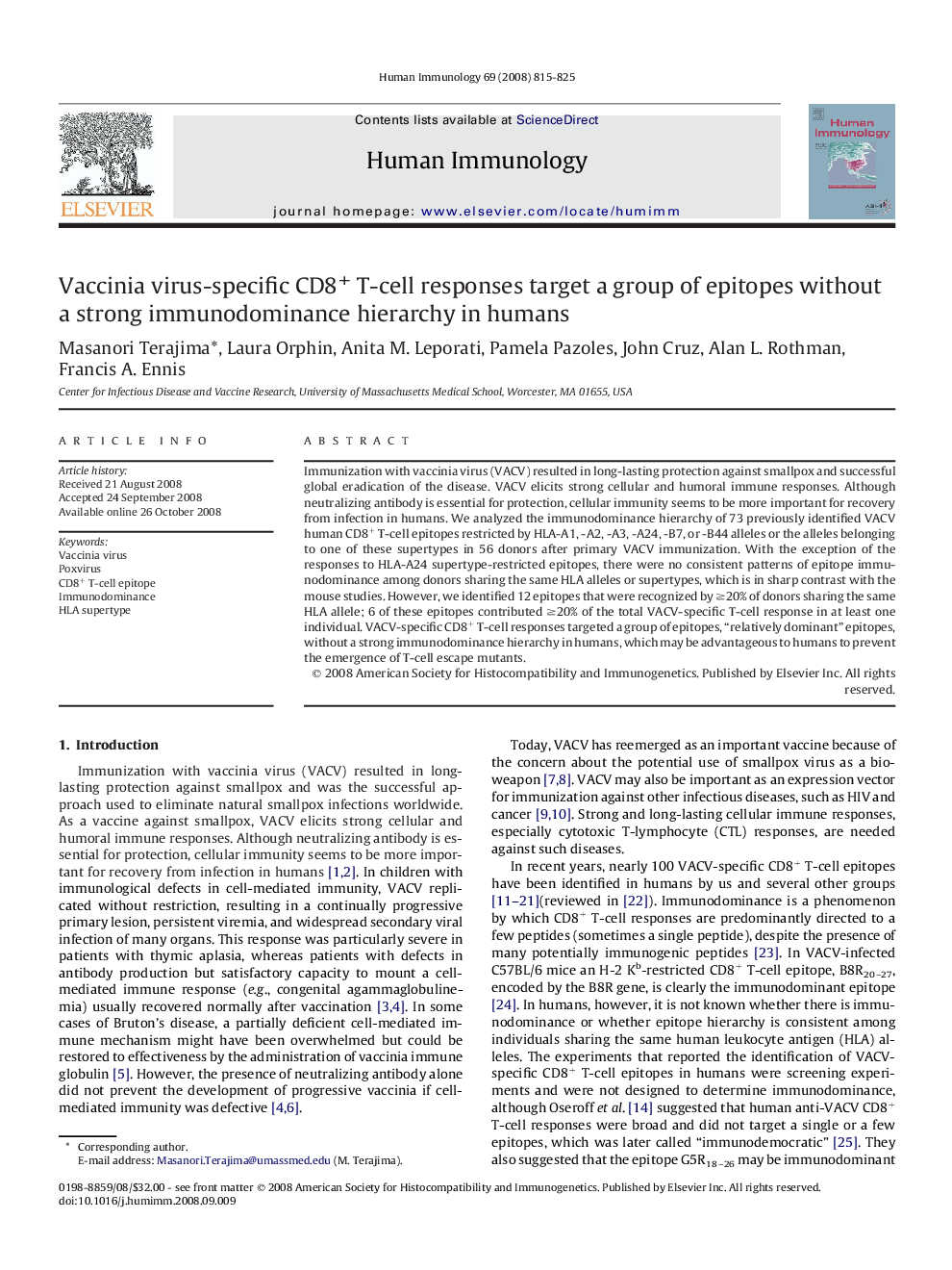| Article ID | Journal | Published Year | Pages | File Type |
|---|---|---|---|---|
| 3351475 | Human Immunology | 2008 | 11 Pages |
Abstract
Immunization with vaccinia virus (VACV) resulted in long-lasting protection against smallpox and successful global eradication of the disease. VACV elicits strong cellular and humoral immune responses. Although neutralizing antibody is essential for protection, cellular immunity seems to be more important for recovery from infection in humans. We analyzed the immunodominance hierarchy of 73 previously identified VACV human CD8+ T-cell epitopes restricted by HLA-A1, -A2, -A3, -A24, -B7, or -B44 alleles or the alleles belonging to one of these supertypes in 56 donors after primary VACV immunization. With the exception of the responses to HLA-A24 supertype-restricted epitopes, there were no consistent patterns of epitope immunodominance among donors sharing the same HLA alleles or supertypes, which is in sharp contrast with the mouse studies. However, we identified 12 epitopes that were recognized by â¥20% of donors sharing the same HLA allele; 6 of these epitopes contributed â¥20% of the total VACV-specific T-cell response in at least one individual. VACV-specific CD8+ T-cell responses targeted a group of epitopes, “relatively dominant” epitopes, without a strong immunodominance hierarchy in humans, which may be advantageous to humans to prevent the emergence of T-cell escape mutants.
Related Topics
Life Sciences
Immunology and Microbiology
Immunology
Authors
Masanori Terajima, Laura Orphin, Anita M. Leporati, Pamela Pazoles, John Cruz, Alan L. Rothman, Francis A. Ennis,
